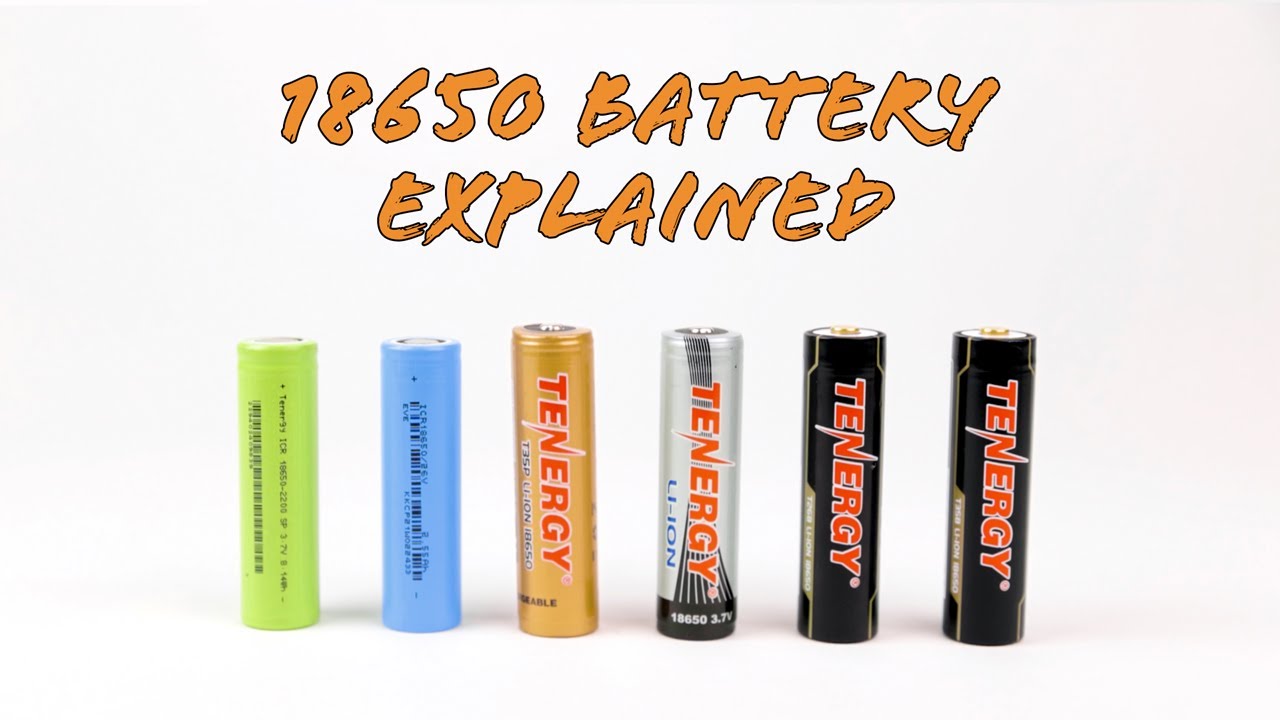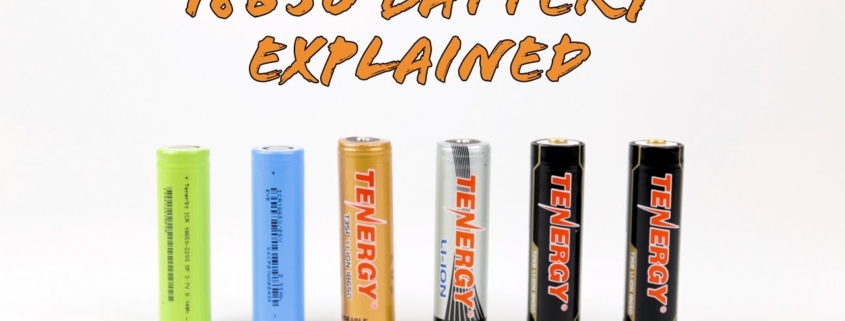What is a 18650 Battery Size? The Complete Guide
Ever wondered why your high-powered flashlight uses the same battery as a Tesla?
Or why tech enthusiasts keep raving about “18650s”?
Here’s the deal:
The 18650 battery has quietly become the workhorse of portable power. And understanding what is a 18650 battery size can save you from buying the wrong replacement—or worse, damaging your expensive gear.
In this guide, as a professional 18650 battery pack manufacturer, I’ll break down everything you need to know about 18650 batteries. From their exact dimensions to why they’re powering everything from laptops to electric vehicles.
Let’s dive in.

What Exactly is a 18650 Battery?
A 18650 battery is a rechargeable lithium-ion cell with standardized dimensions.
The name isn’t random. It’s actually a code that tells you the exact size:
- 18 = 18 millimeters in diameter
- 65 = 65 millimeters in length
- 0 = Cylindrical shape
Think of it like a slightly larger AA battery on steroids.
But here’s where it gets interesting:
While the physical size is standardized, these batteries pack WAY more power than your typical household batteries.
We’re talking about:
- 3.6-3.7V nominal voltage (compared to 1.5V for alkaline AAs)
- 1,500-3,600mAh capacity
- Rechargeable for 300-500+ cycles
The Real-World Dimensions (And Why They Matter)
Here’s something most people don’t realize:
Not all 18650 batteries are EXACTLY 65mm long.
Unprotected 18650s typically measure:
- Diameter: 18mm (±0.2mm)
- Length: 65mm (±0.1mm)
But protected 18650s? They’re usually 68-70mm long.
Why?
Protected batteries include a tiny circuit board that prevents overcharging, over-discharging, and short circuits. This safety feature adds 3-5mm to the overall length.
And this matters because:
Some devices have ZERO tolerance for extra length. I’ve seen people force a protected 18650 into a tight battery compartment and damage their device.
Always check your device specs before buying.
Where You’ll Find 18650 Batteries (Hint: They’re Everywhere)
18650s are like the Swiss Army knife of rechargeable batteries.
Here’s where they show up:
Consumer Electronics
- Laptop battery packs (usually 4-8 cells)
- Портативные банки питания
- High-end flashlights
- Vaping devices
Электромобили
- Tesla Model S uses 7,104 of them
- E-bikes and scooters
- Electric skateboards
Power Tools
- Cordless drills
- Impact drivers
- Portable saws
Specialty Applications
- Solar storage systems
- Medical devices
- Professional camera equipment
The reason they’re so popular?
They hit the sweet spot between size, capacity, and power delivery.
Types of 18650 Batteries: Which One Do You Need?
Not all 18650s are created equal.
In fact, choosing the wrong type can be downright dangerous.
Here are the main variations:
Protected vs. Unprotected
Protected 18650s:
- Have built-in safety circuits
- Slightly longer (68-70mm)
- Best for beginners
- Lower maximum current output
Unprotected 18650s:
- No safety circuit
- True 65mm length
- Higher performance
- Require external protection
Button-Top vs. Flat-Top
This one’s simple:
Button-top batteries have a small raised bump on the positive end (like AA batteries).
Flat-top batteries are completely flat on both ends.
Most modern devices use flat-tops. But some older flashlights need button-tops to make proper contact.
High-Capacity vs. High-Drain
Here’s where it gets technical:
High-capacity cells (3,000-3,600mAh):
- Longer runtime
- Lower current output (5-10A)
- Perfect for flashlights and power banks
High-drain cells (2,000-2,500mAh):
- Shorter runtime
- Higher current output (20-30A)
- Essential for vaping and power tools
Pro tip: Never use a high-capacity cell in a high-drain device. It’s a recipe for overheating.
How to Choose the Right 18650 Battery
Picking the right 18650 isn’t rocket science.
But you DO need to know what to look for.
Here’s my simple 4-step process:
Step 1: Check Your Device Requirements
First, figure out what your device needs:
- Required length (65mm or 68-70mm?)
- Terminal type (flat or button-top?)
- Current requirements (listed as “A” or amps)
Step 2: Match the Specifications
Once you know what you need, match it to a battery:
- Capacity (mAh) for runtime
- Continuous discharge rating (CDR) for safety
- Chemistry type for specific uses
Step 3: Buy From Reputable Sources
This is HUGE:
Fake 18650s are everywhere. And they’re dangerous.
I’ve tested “9,000mAh” 18650s that were actually rewrapped 1,200mAh cells.
Stick to known brands:
- Samsung
- Sony/Murata
- LG
- Panasonic/Sanyo
Step 4: Verify Authenticity
Real 18650s have:
- Clear, consistent labeling
- Proper heat shrink wrap
- Realistic specifications
- Batch codes
If a deal seems too good to be true, it probably is.
The Technical Specs That Actually Matter
Let’s cut through the technical jargon.
Here are the only specs you really need to understand:
Voltage
- Nominal: 3.6-3.7V
- Fully charged: 4.2V
- Empty: 2.5-3.0V
Never discharge below 2.5V. It permanently damages the cell.
Capacity
- Measured in mAh (milliampere-hours)
- Real-world range: 1,500-3,600mAh
- Higher capacity = longer runtime
Скорость разряда
- Measured in amps (A)
- Continuous vs. pulse ratings
- Must match your device needs
Cycle Life
- Quality cells: 300-500 cycles
- Premium cells: 500-1,000 cycles
- Cheap cells: 50-100 cycles
The bottom line?
A good 18650 balances all these factors for your specific use case.
Safety First: How to Handle 18650s Without Drama
I’ll be straight with you:
18650s are safe when handled properly. But they’re not toys.
Here’s how to stay safe:
Storage Rules
- Keep them in plastic cases
- Store at 40-60% charge for long-term
- Avoid extreme temperatures
- Never carry loose in pockets (keys + battery = bad news)
Charging Best Practices
- Use a quality lithium-ion charger
- Never leave charging unattended overnight
- Stop at 4.2V (chargers do this automatically)
- Replace batteries that get hot while charging
Warning Signs to Watch For
Replace your 18650 immediately if you see:
- Damaged wrap
- Dents or deformation
- Unusual heat during use
- Significant capacity loss
- Any leaking
Disposal
Never throw 18650s in regular trash.
Most electronics stores and battery retailers have recycling programs. Use them.
Advanced Tips for Power Users
Want to get the most from your 18650s?
Here are some pro-level strategies:
Matching Cells
When using multiple 18650s:
- Buy from the same batch
- Match voltages within 0.05V
- Rotate positions regularly
Temperature Management
- Ideal operating range: 10-45°C
- Cold reduces capacity temporarily
- Heat reduces lifespan permanently
Smart Charging
- Charge to 4.1V for 2x lifespan
- Use lower current for longevity
- Balance charge multi-cell packs
Testing and Monitoring
- Check internal resistance annually
- Log capacity over time
- Replace at 80% original capacity
18650 vs Other Battery Sizes
How does the 18650 stack up against newer formats?
18650 vs 21700
- 21700: 21mm × 70mm
- 30-50% more capacity
- Becoming popular in newer devices
- 18650 still more common
18650 vs 26650
- 26650: 26mm × 65mm
- Higher capacity but bulkier
- Less common in consumer devices
- Mainly for specialty applications
18650 vs AA
- 18650: 3x the voltage
- 5-10x the capacity
- Rechargeable vs. disposable
- Not interchangeable
The verdict?
18650s remain the sweet spot for most applications in 2025.
Future of 18650 Technology
The 18650 isn’t standing still.
Recent developments include:
Silicon Anodes
- 20-30% capacity increase
- Same size, more power
- Rolling out in 2025-2026
Solid-State Variants
- Improved safety
- Faster charging
- Higher energy density
Graphene Enhancement
- Better heat dissipation
- Longer lifespan
- Premium pricing (for now)
But here’s the thing:
The 18650 format will be around for years. Too many devices depend on it.
Итоги
So, what is a 18650 battery size?
It’s more than just measurements. It’s a standardized power solution that’s revolutionized portable electronics.
Whether you’re replacing laptop batteries, building a flashlight collection, or diving into DIY projects, understanding 18650 basics will serve you well.
Remember:
- Check dimensions (especially protected vs. unprotected)
- Match specifications to your device
- Buy from reputable sources
- Handle with respect
Get these fundamentals right, and your 18650s will deliver reliable power for years to come.
Now you know exactly what is a 18650 battery size—and more importantly, how to choose and use them safely.








